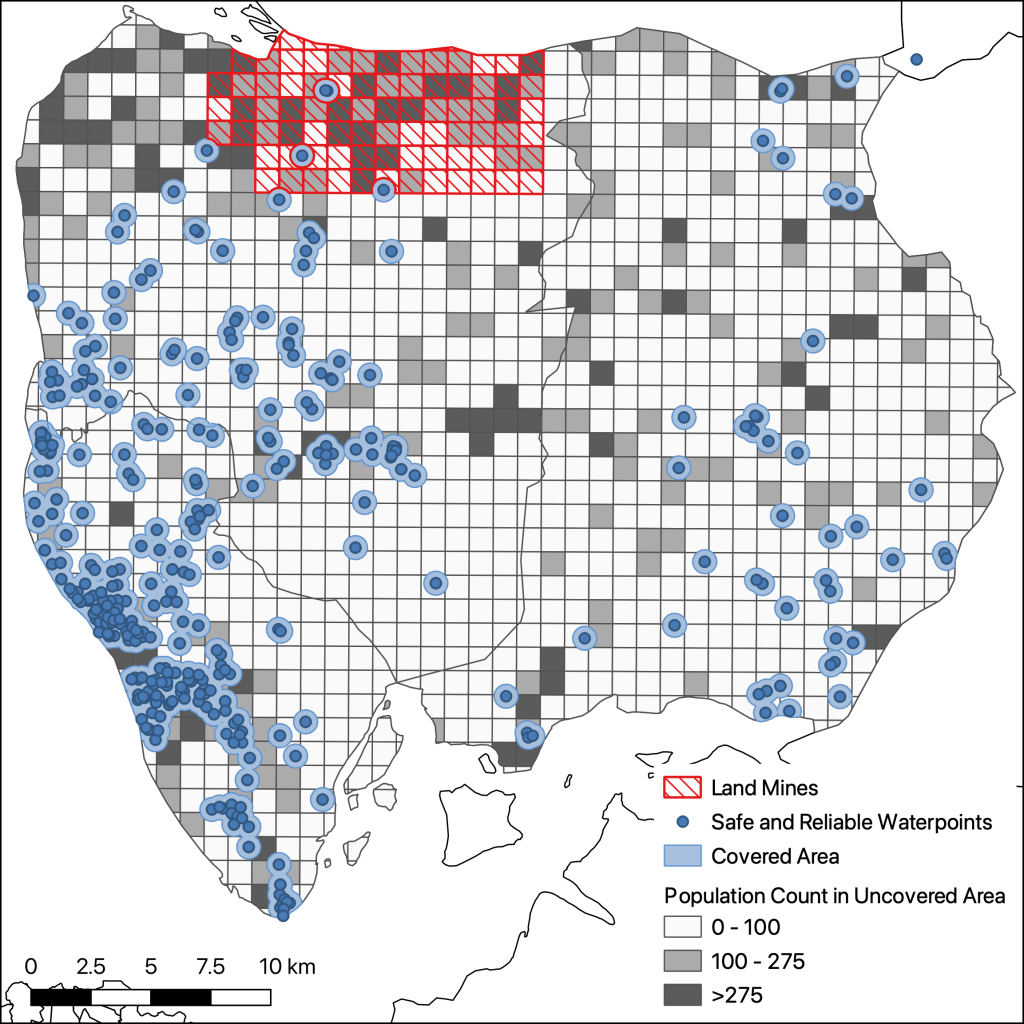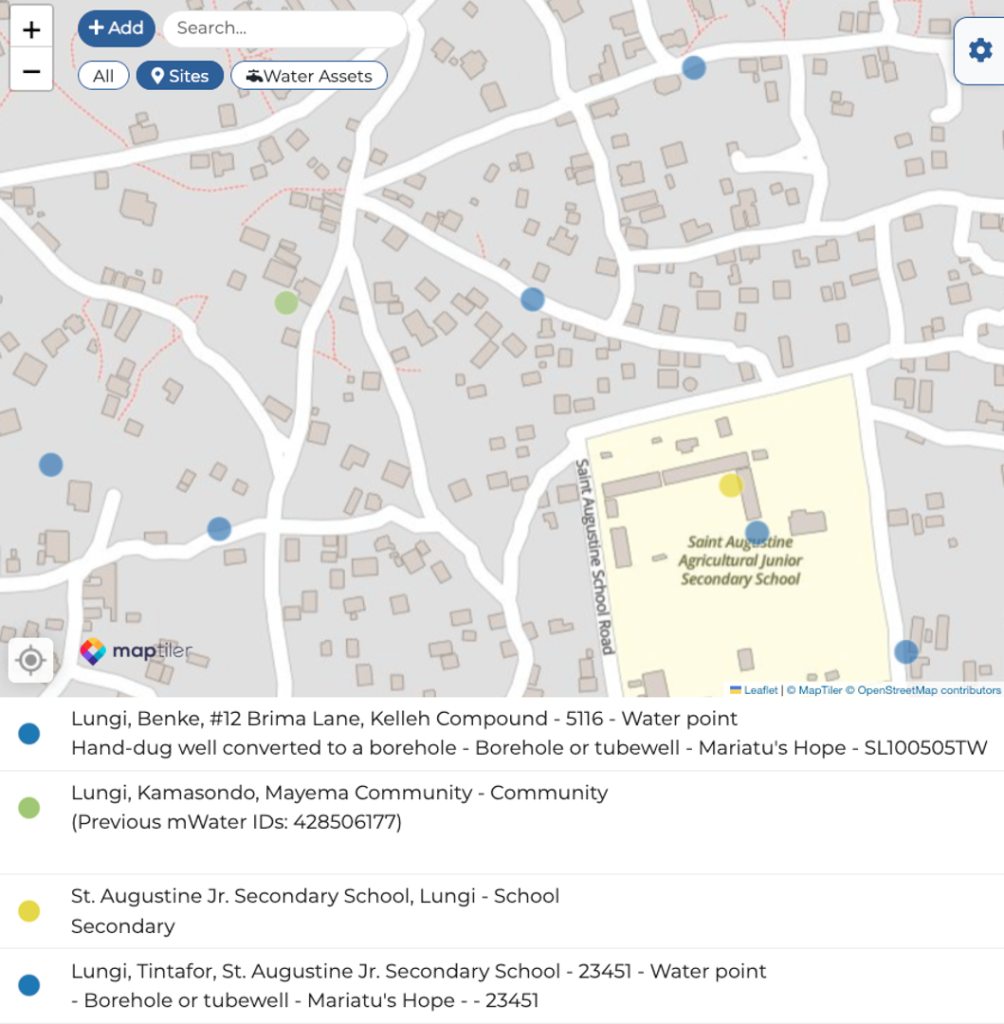What we learn together
Ending the Water Crisis: Why We Believe Saturation is the Way Forward
At The Water Project (TWP), we believe that ending the water crisis requires more than just building a few wells or water points in scattered communities. Our mission is to bring sustainable and reliable access to clean water to everyone, everywhere we work. To achieve this, we’ve adopted a saturation-based approach—a strategy that focuses on providing comprehensive water coverage across entire regions.
What Does “Saturation” Mean?
In the context of our work, saturation means that everyone in a given area gains access to clean and safe water: every household, school, and healthcare facility.
This approach ensures that no one is left in need and that every possible gap in access is closed.
Our Original Approach and Its Shift
Before we embraced the idea of 100% saturation, our focus was more scattered. We would respond to community requests and assess needs on a case-by-case basis. Our goal was always to help as many people as possible, but we weren’t thinking in terms of regional saturation.
Director of Program Spencer Bogle explained, “We were envisioning complete coverage of a county, but we did not really have a tool to measure it beyond our current projects.
“Before we started actively defining and measuring our progress toward saturation, our goal was to meet the needs of people within specific counties or districts. The teams in the field would plan and implement projects according to the needs and requests of the communities. Oftentimes, this happened by vetting the needs of a community, and, from early on, we recognized the need for students to have safe water both at home and at school.
“Furthermore, we were finding that counties are big! Additionally, it was difficult to see if people had reliable water access from any other source (government, piped water schemes, or other organizations). We made a couple of big decisions in our programmatic interventions to make our goals for saturation more specific, measurable, attainable, relevant, and time-bound (SMART).
“First, we worked with our partners to reduce the scope of new work to focus on sub-counties (Sierra Leone was already working on a chiefdom-focused scale), and then we needed a diagnostic assessment of regional water access.”
This ad hoc approach had limitations. While we were making a significant impact, we couldn’t guarantee that everyone in the regions where we worked had access to water. Plus, in such a large service area, it was difficult to determine who might still be relying on unreliable or contaminated water sources.
These challenges prompted us to make some decisions. First, we began focusing on smaller, more manageable areas, such as sub-counties, where we could realistically achieve saturation. And because we also needed better data, we recruited Program Manager Emma Kelly to lead diagnostic assessments of regional water access through water point mapping.
The Role of Water Point Mapping in Saturation
Water point mapping (WPM) became an essential tool in our quest for saturation. Through the hard work of many community surveyors, WPM allows us to track the functionality and accessibility of every water point in a given area. This process allows us to assess where existing water points are located, determine whether they’re providing reliable access to safe water, and identify gaps where people are still underserved.

By using water point mapping, we’ve been able to prioritize areas with the greatest need and ensure that no one is left out.
Why We Moved Toward Saturation
The decision to shift to a saturation model was based on evidence.
“One thing that we resonated with was Water For People’s ‘Everyone Forever’ model,” Spencer explained. “I was impressed by their ambitious goal, and even more so by their ability to measure how far they had come.”
Water For People is a fellow member of the Millenium Water Alliance, a global coalition of leading water and sanitation organizations whose aim is to end the water crisis for good.
“Additionally, we were reading studies showing that any gap in safe water access reduced the impact of having a safe water point,” Spencer said.
“Said another way, if you drink four cups of safe water every day (at home) and one cup of contaminated water (at school), you are likely to be sick. If you drink safe water every day out of the month and contaminated water a day or two out of the month, it can eliminate the health gains of the safe water. That is why saturation is so important.”
This insight made us realize that in order to truly transform lives, we couldn’t afford to leave any gaps. Full, comprehensive coverage was the only way to maximize the health, educational, and economic benefits of clean water access.
What Does Saturation Look Like?
A fully saturated area means more than just ticking off the number of water points we’ve built.

“Once an area is saturated, this means that everyone in the area has access to safe water within a 30-minute round trip from their home,” said Spencer. “It means that every school in the area has safe water, and every healthcare facility in the area has safe water.
“It also means that the water is reliable. We monitor each water point so that we can keep the water flowing and make repairs quickly when something breaks. And something will break!
“It means that when one water point goes down in a community, people still have access to safe water.”
But saturation doesn’t mean that we build a water point and abandon it to crumble and fall apart; for the concept of saturation to work, the safe water needs to be reliable as well as plentiful. Once the projects are built, we provide ongoing access to affordable maintenance and repair services to keep the water flowing.
Our Director of Monitoring, Evaluation, Resolution & Learning, Allison Gregory, has designed a monitoring system that helps us see when breakdowns occur and the issues that need to be resolved. Our teams on the ground perform quarterly site visits and biannual water quality testing to ensure full and safe functionality of each water point, and when issues do arise, they engage with the communities to resolve them.
But we can only do this effectively if our geographic scale is focused on a level where we can provide effective services. The sub-county level allows us to expand our commitment to building sustainable networks of community water points at a realistic and measurable scale.
The impact includes (but is not limited to):
- Health: People use water from multiple sources throughout the day. We work to ensure community members can always get water from a high-quality source and have sufficient water to practice good hygiene every day.
- Economy: When people have reliable safe water, they have more time and resources for business, connection, and creativity.
- Education: Students have more time for school when reliable water is available onsite and miss fewer days to illness when safe water is available at both school and at home.
By focusing on saturation, we’re creating resilient, sustainable water systems. Even if one water point fails, the community won’t have to rely on unsafe sources, because they will still have access to other safe water points nearby.
Join Us
Saturation represents our commitment to ending the water crisis for good. By ensuring that every community, school, and healthcare facility has reliable access to clean water, we’re creating lasting change that transforms lives. At The Water Project, we believe this is the way forward, and we’re dedicated to making it a reality, one region at a time.
Our mission to achieve 100% water coverage in the regions we serve depends on the support of people like you. By donating to The Water Project, you help us bring safe, reliable water to communities, schools, and healthcare facilities that need it most. Your contribution will not only build new water points, but also ensure ongoing maintenance and support so these systems last for generations.
Together, we can close the gaps and create lasting change. Every donation helps bring us one step closer to full water saturation, transforming lives and building stronger futures for entire communities.
Donate today and be part of the solution that makes clean water access a reality for everyone.
Home More Like ThisTweet